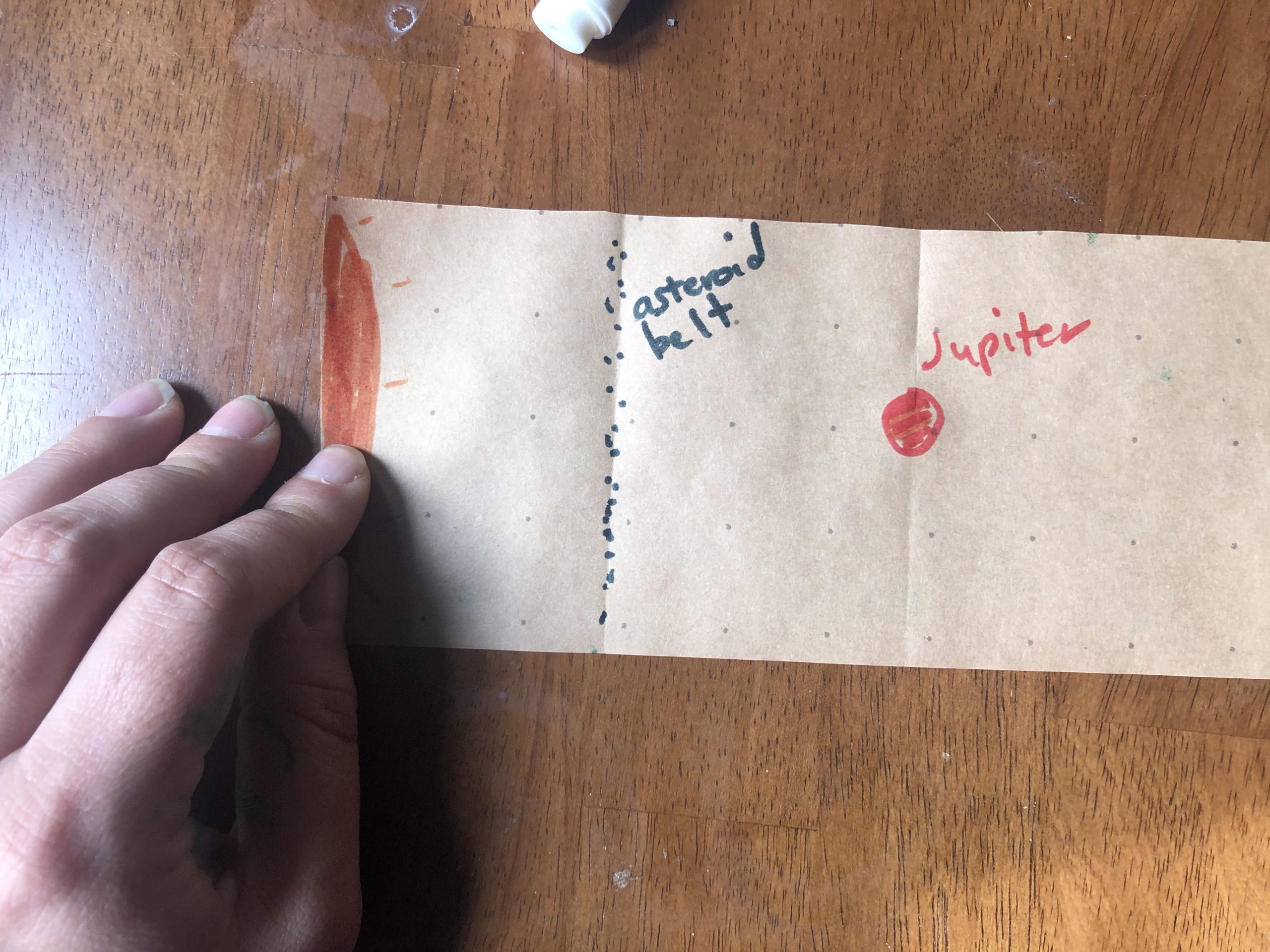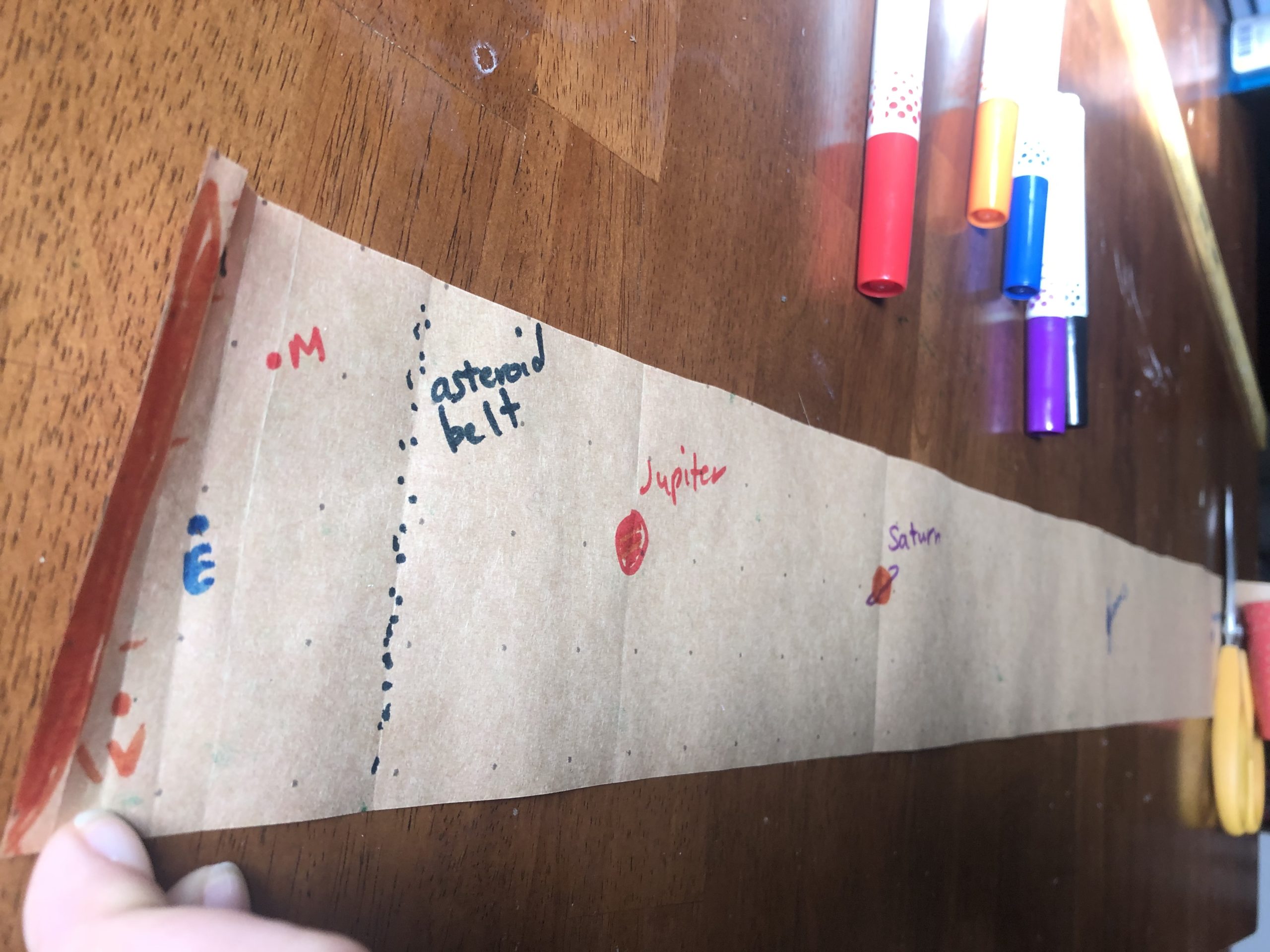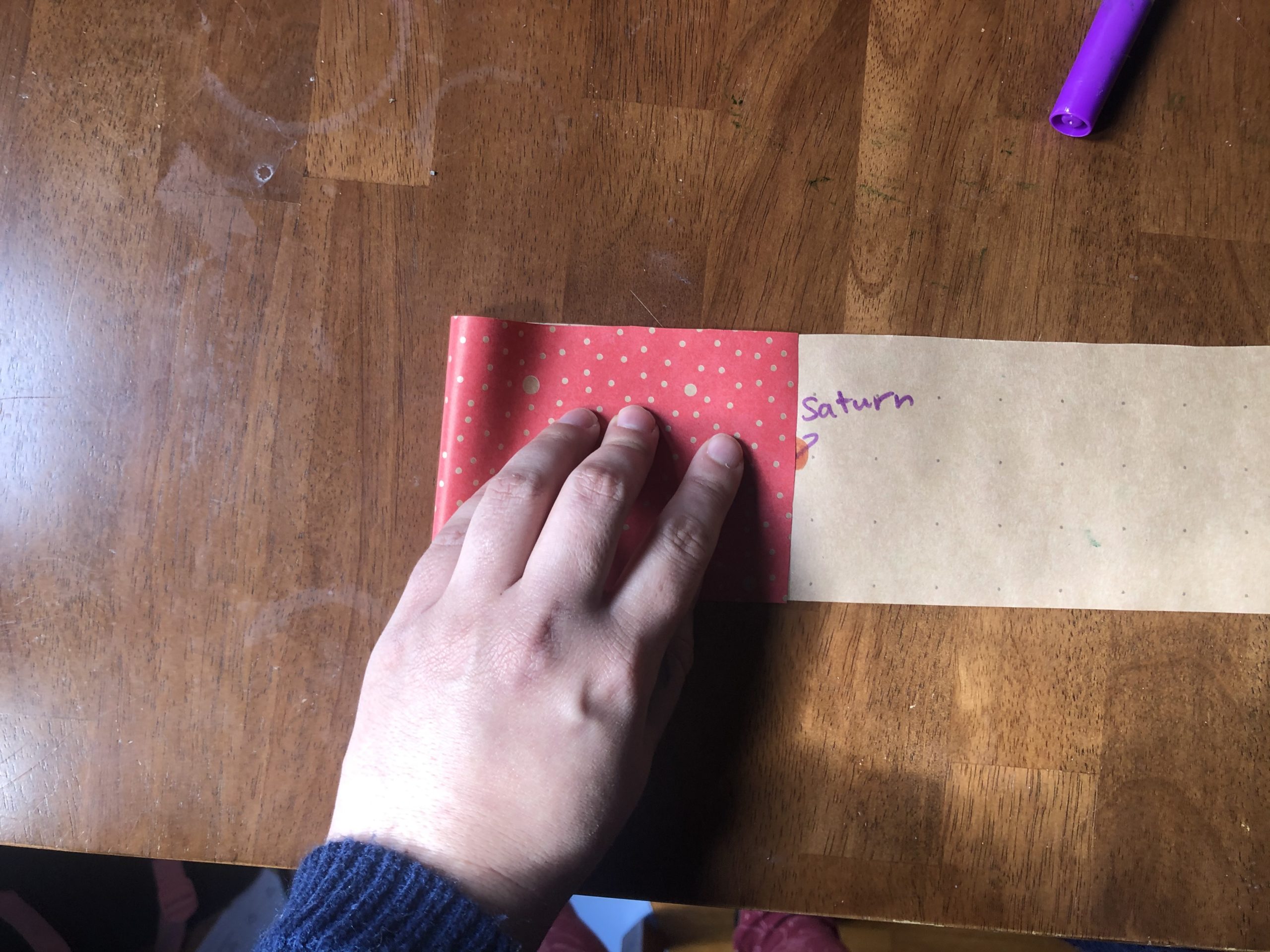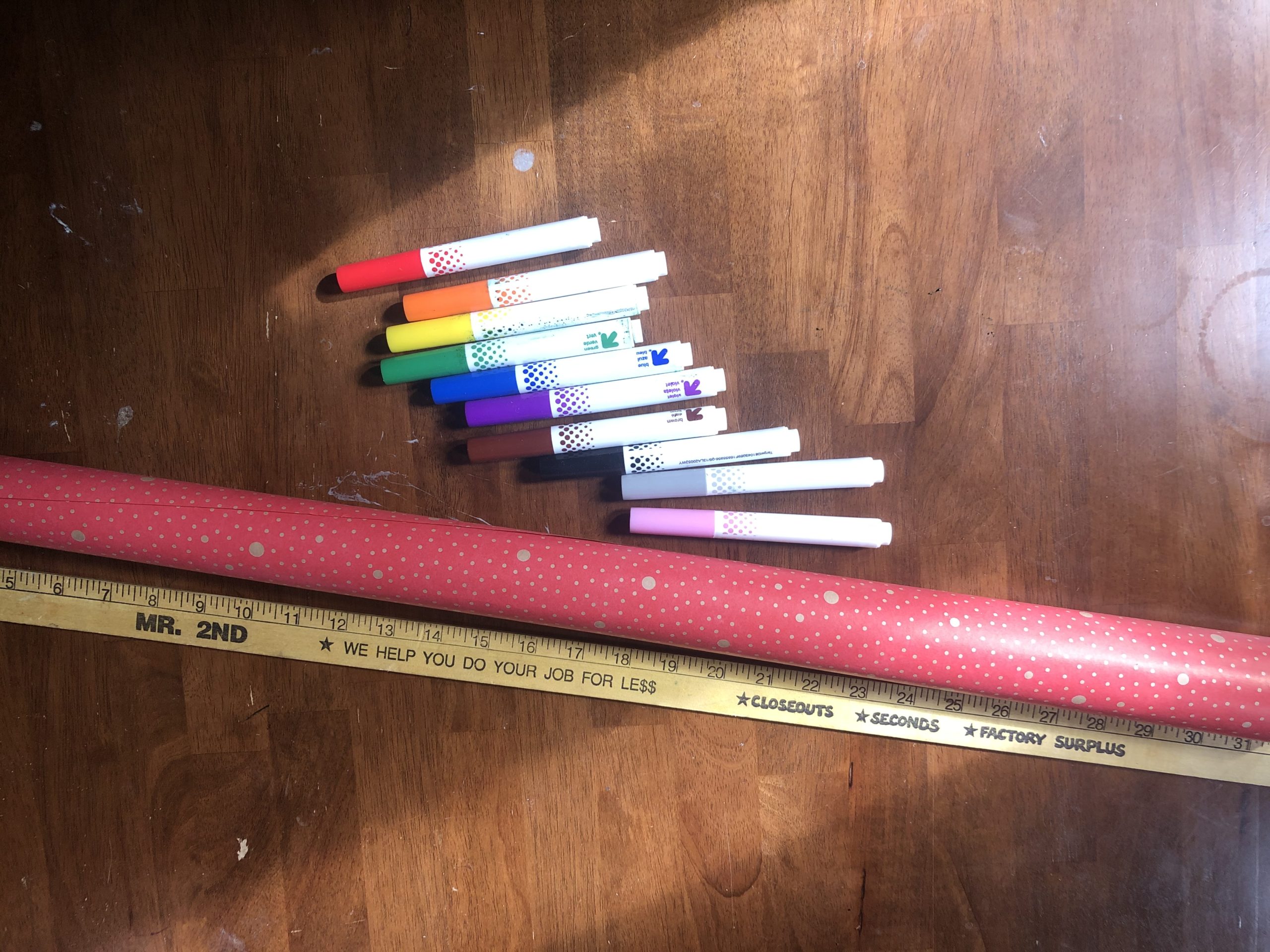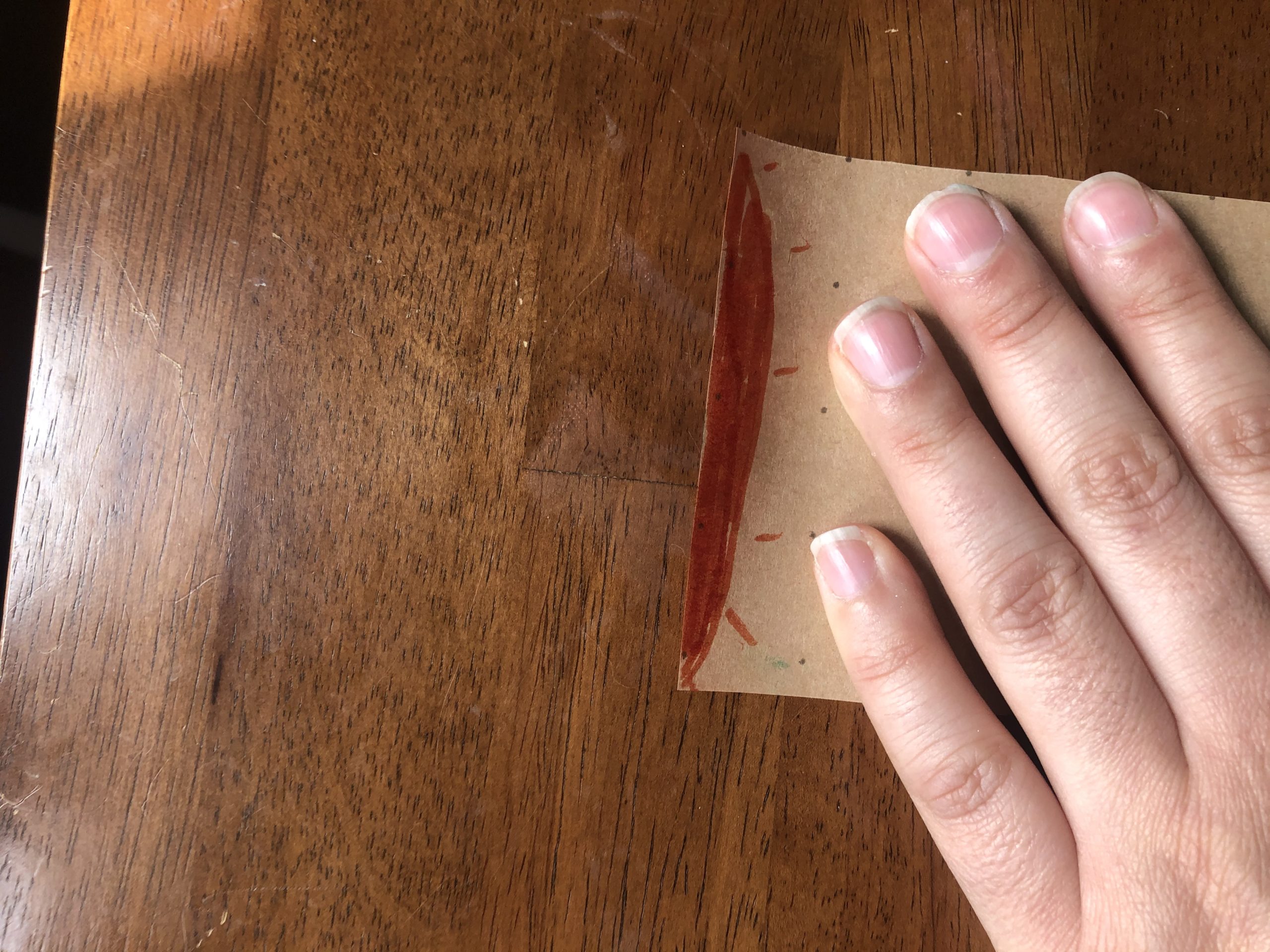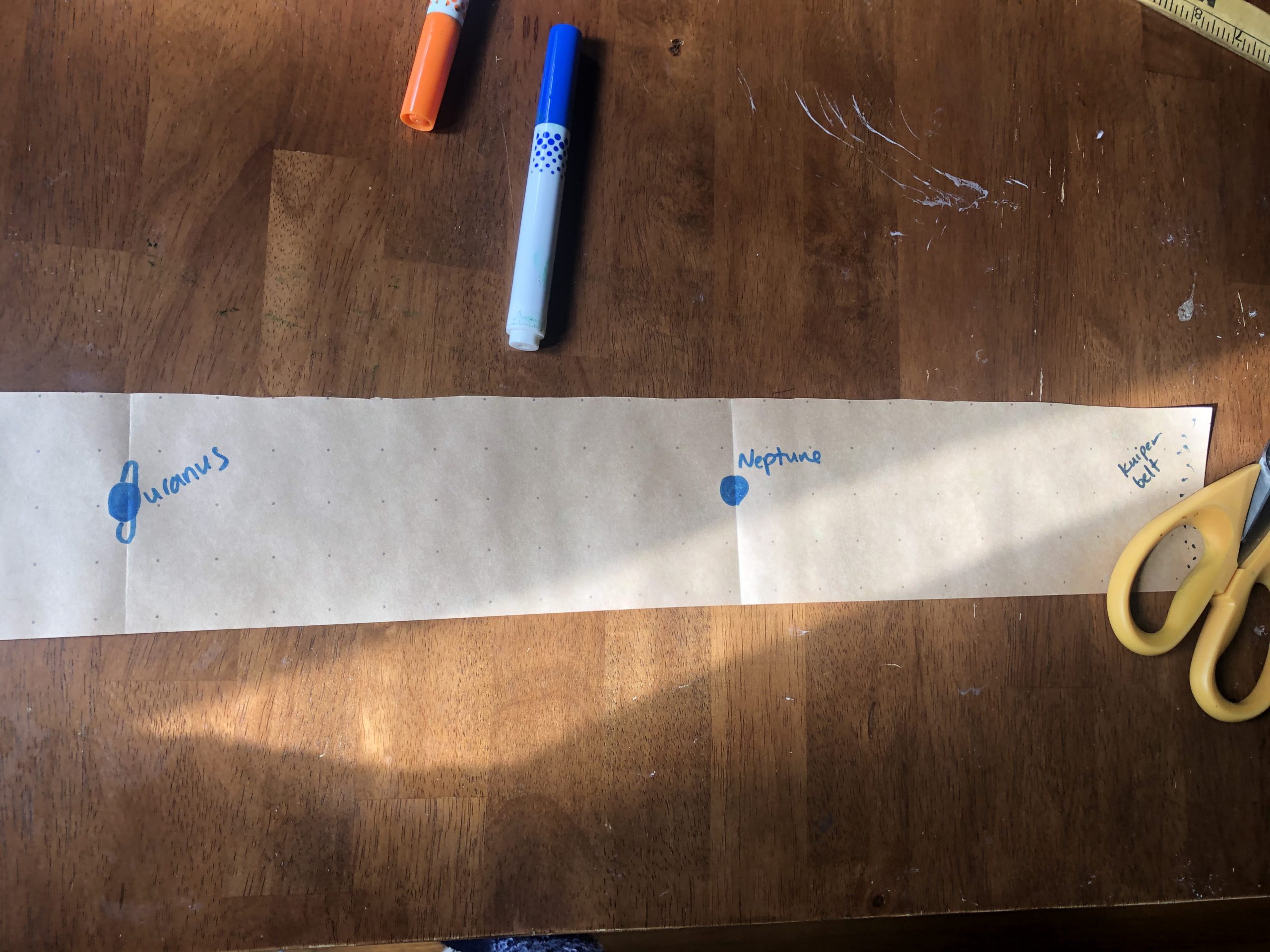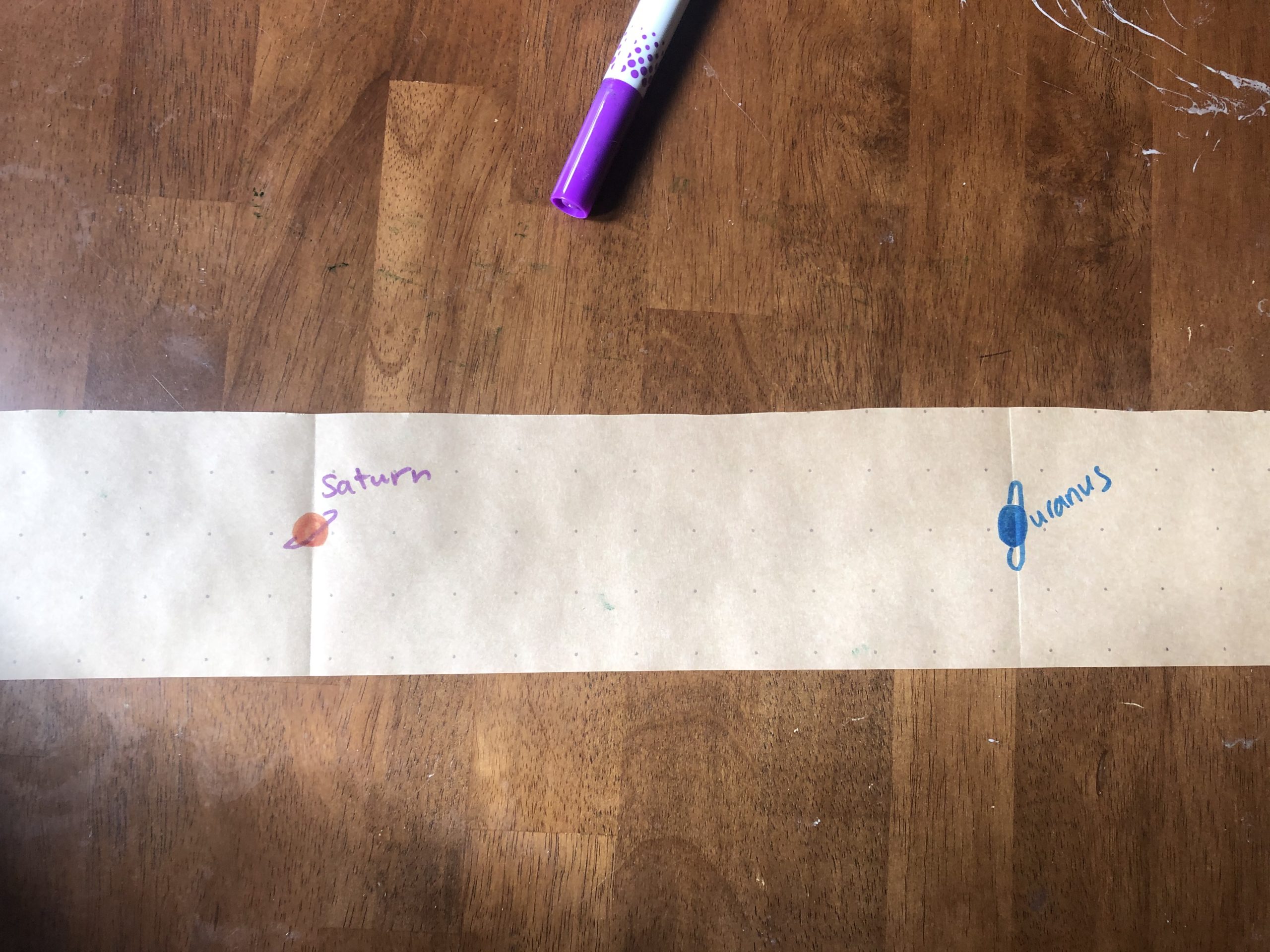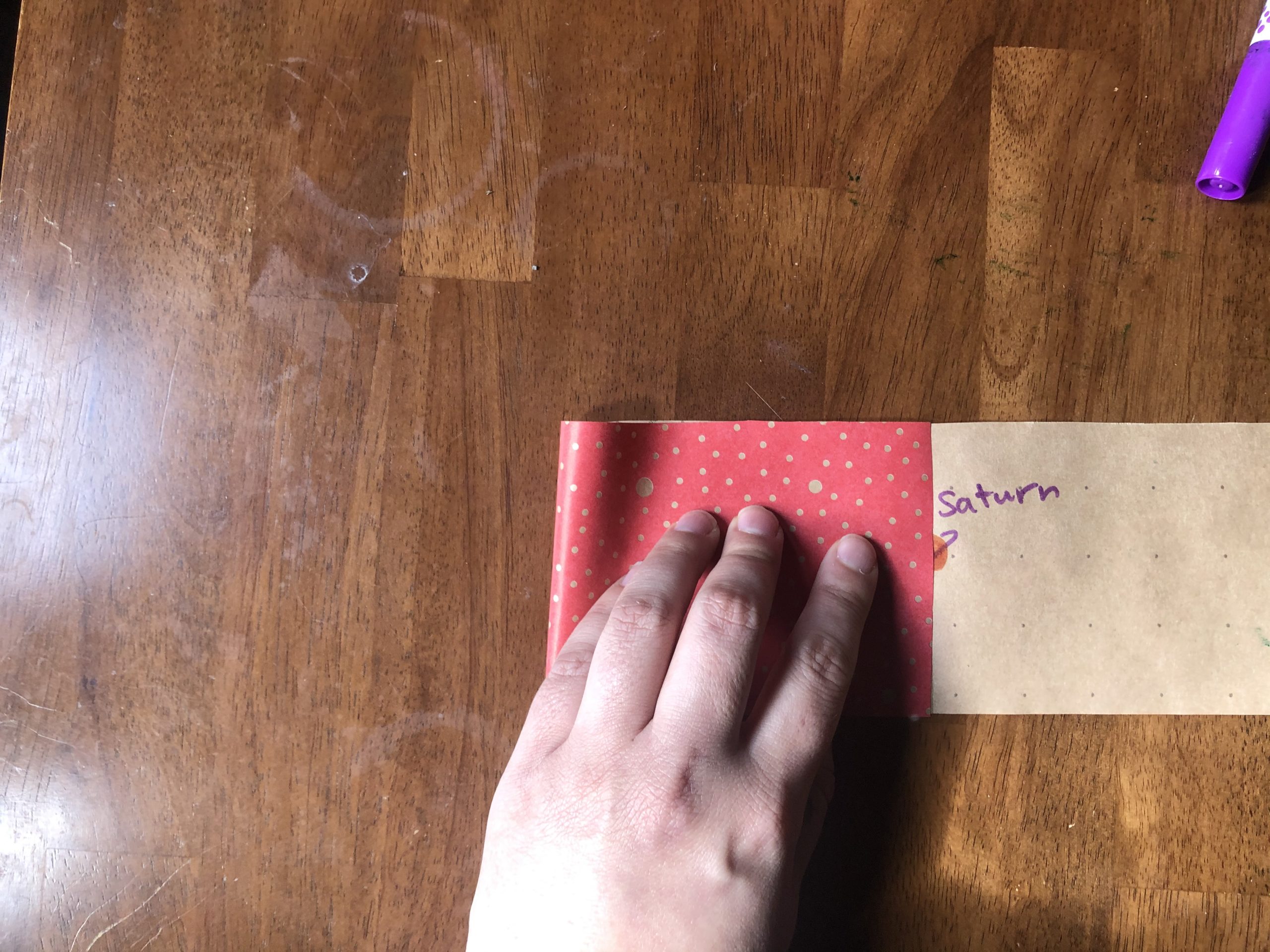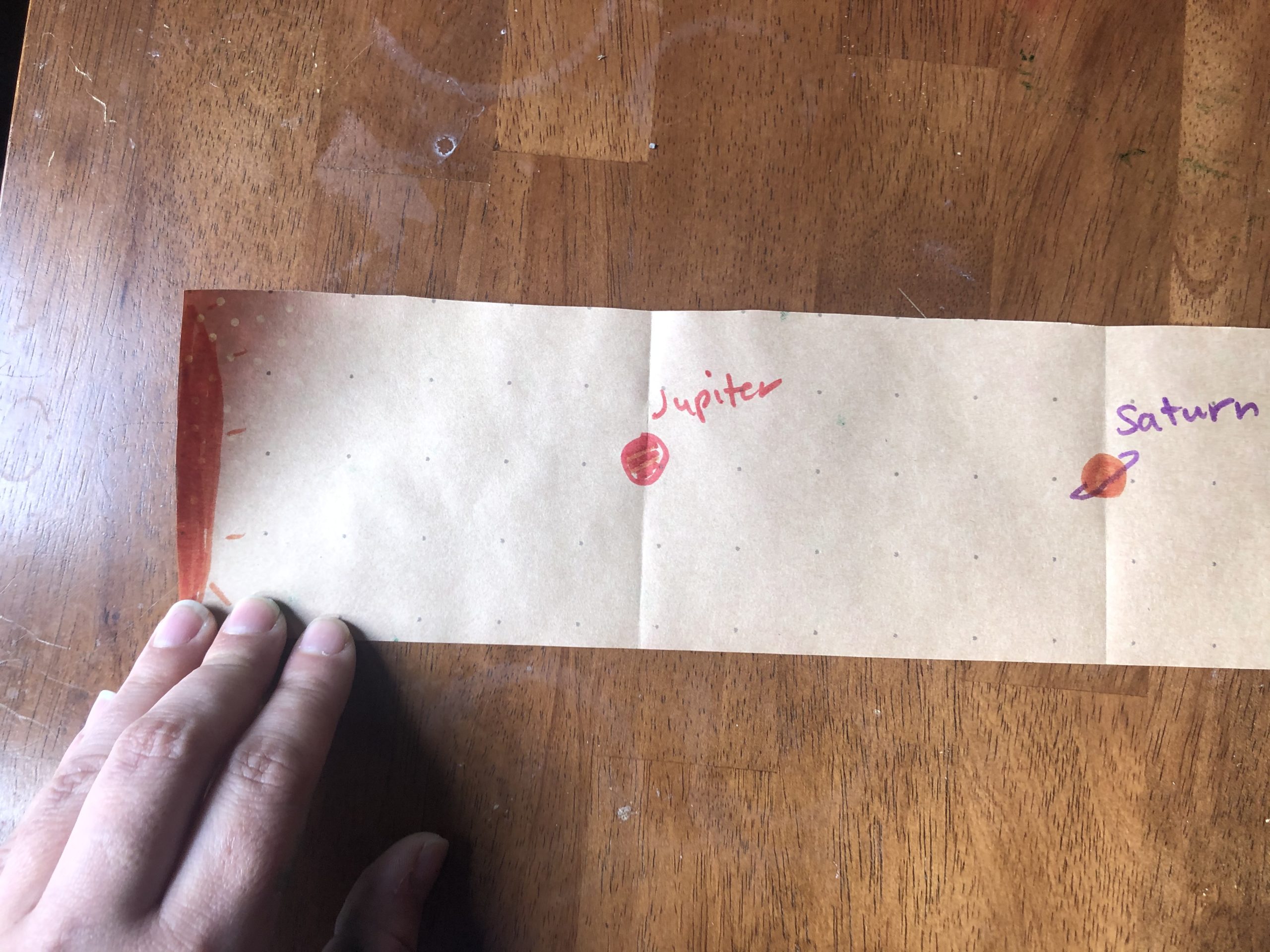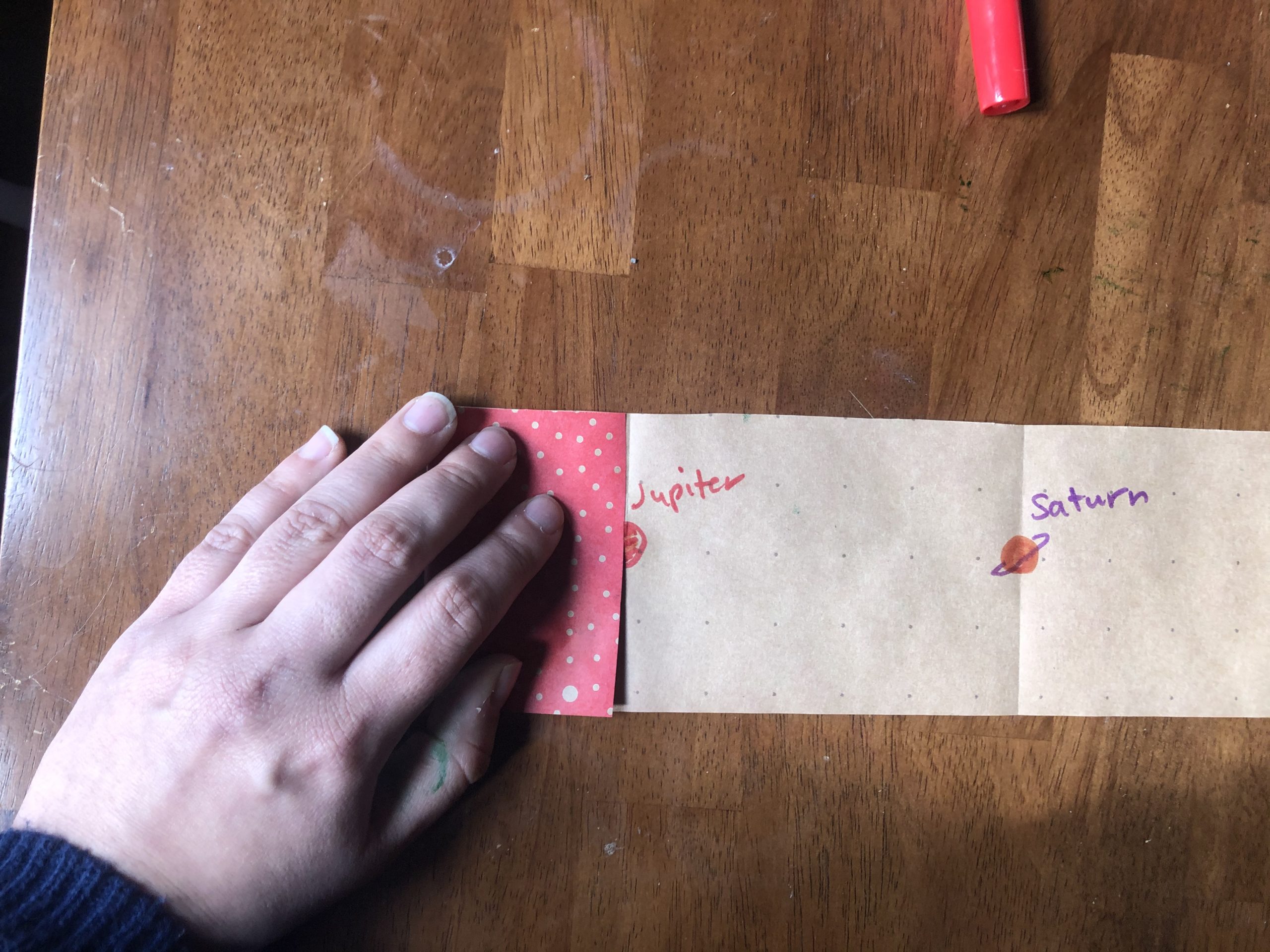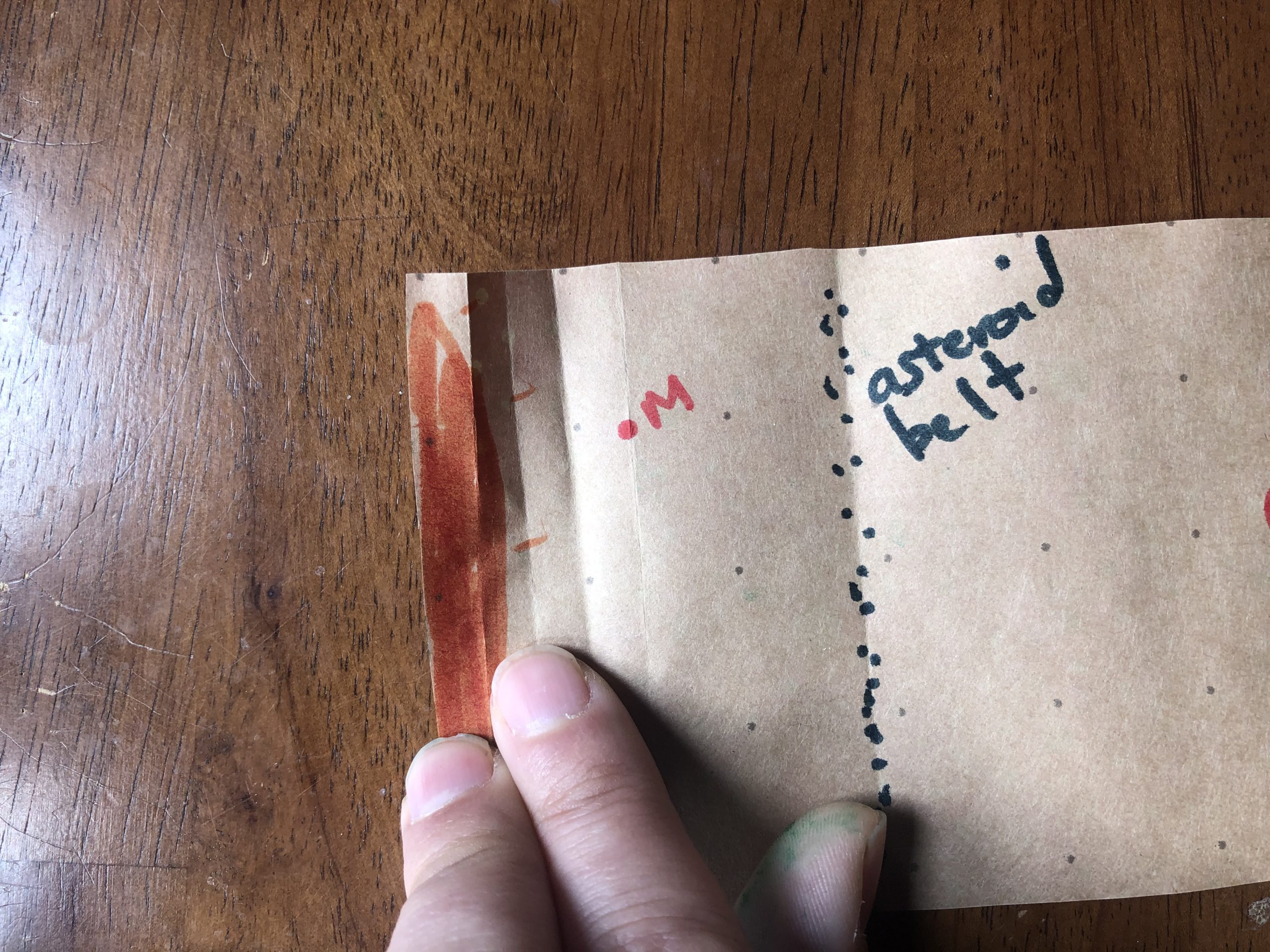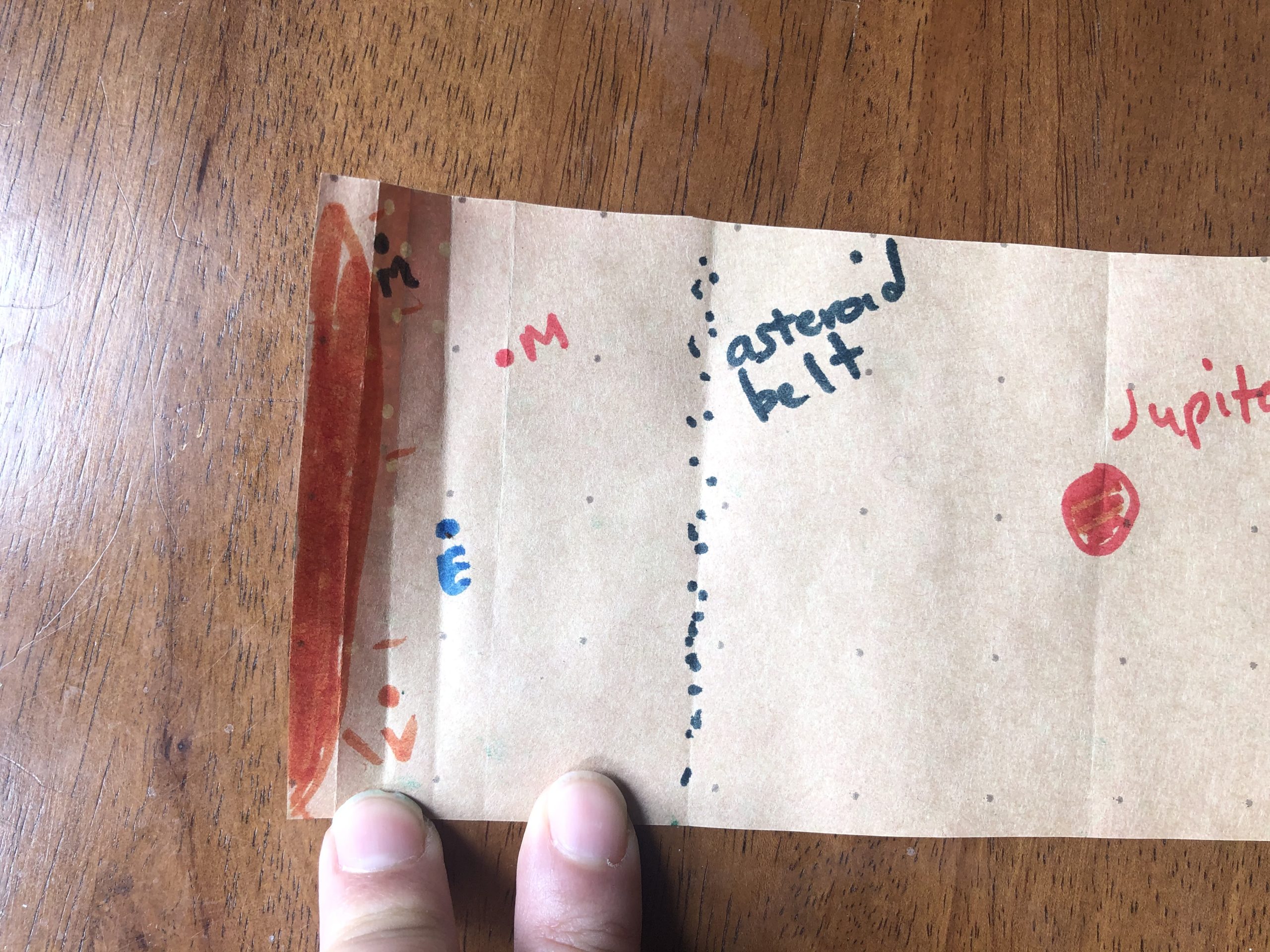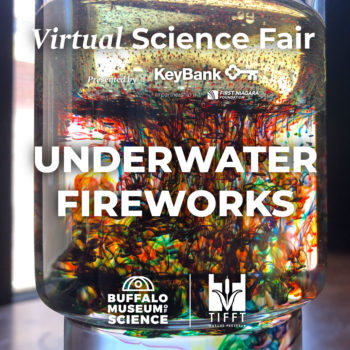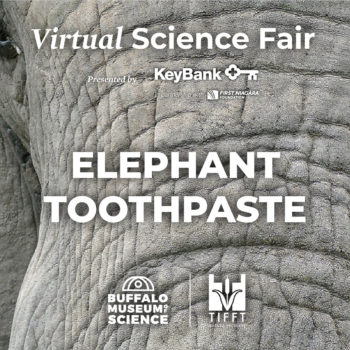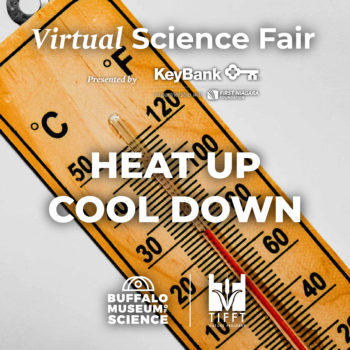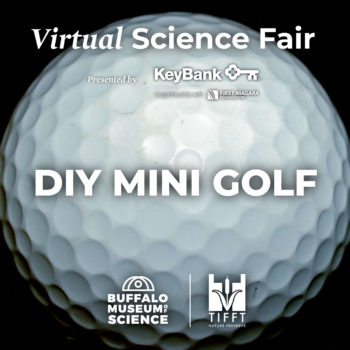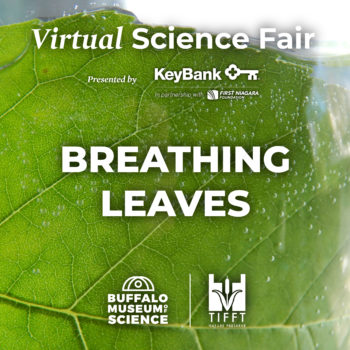Solar System Science

Have science fun as a family! Complete activities with parental supervision.
Materials:
- A one-meter long, 3 inches wide strip of paper (we used wrapping paper)
- Scissors
- Markers
Procedure
- What planets are in our solar system? Make a list from the sun out: Mercury, Venus, Earth, Mars, Jupiter, Saturn, Uranus, Neptune! There’s also two asteroid belts – one beyond Neptune and another between Mars and Jupiter.
- At one end of your paper, draw a very thin Sun – this is your center of the solar system. At the opposite end, put some dots representing the Kuiper Belt – the asteroid belt where we find the dwarf planet Pluto.
- Fold the paper in half and crease firmly. Open it up – what planet would you put on this crease? Draw and label the planet Uranus.
- Let’s look at the right side of the fold. Take the Kuiper Belt side and fold it to the Uranus line. Crease and open up. At this line, draw and label the planet Neptune.
- Now to the left side of Uranus. Fold the Sun to the Uranus line and crease sharply. At this line, draw and label the planet Saturn.
- Fold the Sun to the Saturn line and crease sharply. On this line, draw and label the planet Jupiter.
- Fold the Sun to the Jupiter line – this line doesn’t represent a planet. Draw a bunch of dots on the line to represent the Asteroid Belt.
- Look at how much space you have between the Sun and the Asteroid Belt. You have to fit four planets in that space!
- Fold the sun to the Asteroid belt. At this line, draw and label the planet Mars.
- Fold the sun to Mars. Then, fold the crease to Mars. This should result in three new lines.
- On these three lines, finish out your planets – starting from the line closest to Mars, draw and label Earth, Venus and Mercury.
- Step back and admire your solar system model! Be sure to take a picture and share your results in the Facebook comments on the Buffalo Museum of Science or Tifft Nature Preserve pages!
What’s it all about?
It’s hard to visualize just how big our solar system is. Orbiting the sun, our solar system is made up of eight planets, moons, comets, asteroids, dust, gas and more. In this model, it shows all the planets lined up – this does not happen as they are at different points around their orbits. So, the distances between planets are often much greater!
This model shows why many space missions to outer planets take so long. Many missions can last decades! For example, the Juno probe that is currently orbiting Jupiter traveled for nearly five years before reaching the giant planet.
Try It!
- Explore the different planets in our solar system! Pick a planet to focus on and research it. What is it made of? How big is it? How is it different from Earth?
- Scientists estimate that it would take about 9 months to travel to Mars. How long would it take to go to Jupiter? Saturn? Make an estimate and plan for your trip. What would you bring?
